Search Results for Tag: IFM-Geomar
Arctic sea ice: is the minimum maximum the new normal?
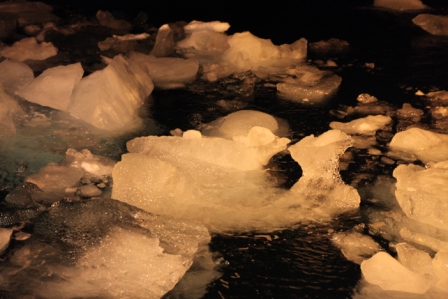
Even the winter sea ice is waning (Off Svalbard, pic. I.Quaile)
If you blinked, you might have missed it. The confirmation came this week that the Arctic sea ice reached yet another all-time low this past winter. It came and went, without too much ado.
Maybe the excitement was just past. The maximum extent was actually reached on March 7th, but of course you can only be sure it is really not going to spread any further once it has definitely been retreating for some time with the onset of spring.
I was waiting for the NSIDC confirmation, but not with any doubt in my mind that it would tell us officially the maximum for this season would be a minimum.
The danger is a “so what?” kind of reaction, or resignation, with the feeling that nothing short of some kind of unprecedented experimental geo-engineering could save the Arctic summer sea ice in the coming years, as the world continues to warm.
Lowest on record
The National Snow and Ice Data Center (NSIDC), part of the Cooperative Institute for Research in Environmental Sciences at the University of Colorado Boulder, and NASA confirmed this week that Arctic sea ice was at a record low maximum extent for the third straight year.
It reached the maximum on March 7, at 14.42 million square kilometers (5.57 milion square miles). Since then, it has started its annual decline with the start of the melt season. Some time in September it will reach its minimum.
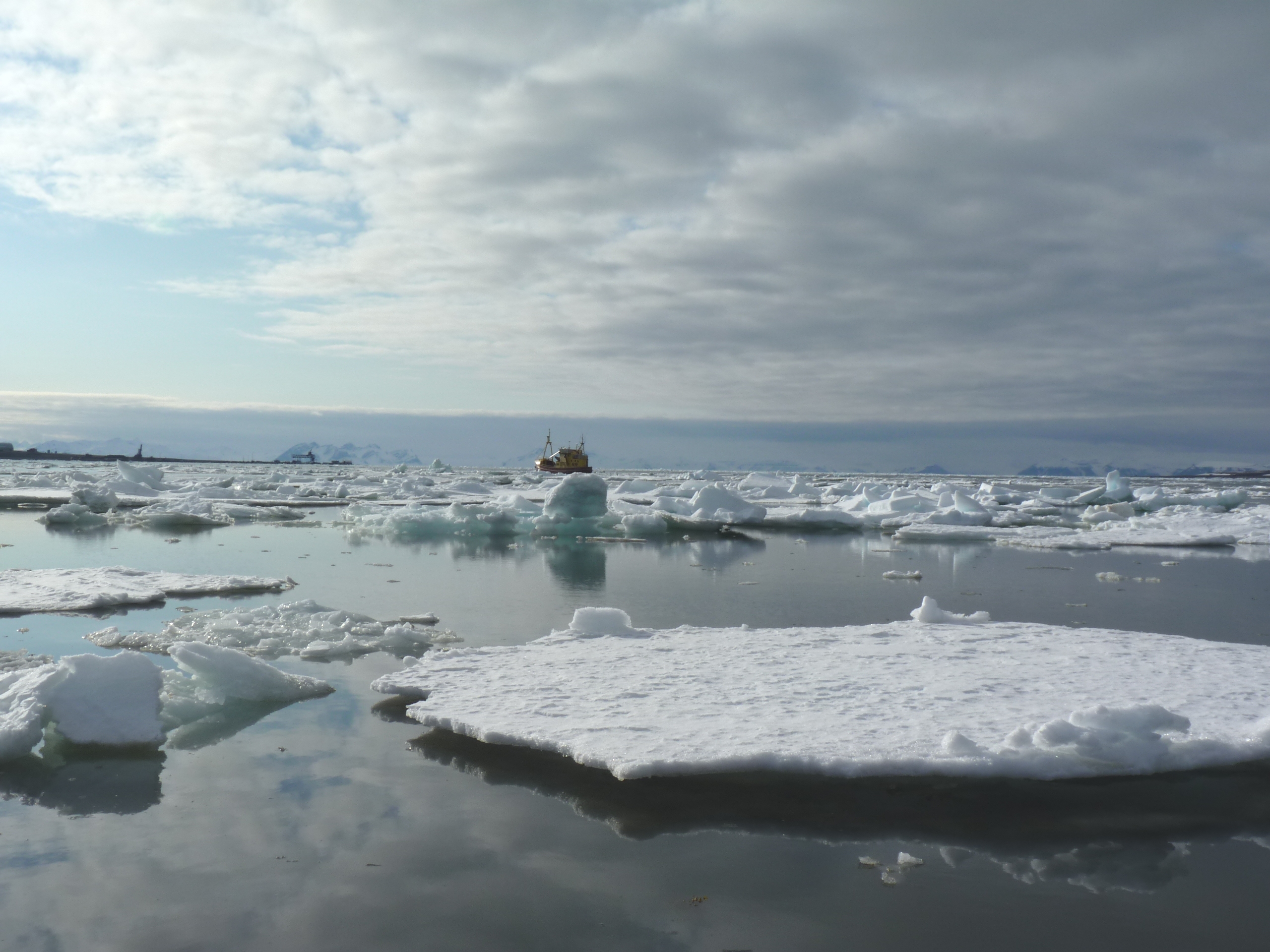
Sea ice going, going, gone? (Photo: I Quaile, off Svalbard)
This year’s maximum is the lowest in the 38-year satellite record. NSIDC scientists said a very warm autumn and winter had contributed to the record low maximum. Air temperatures were 2.5 degrees Celsius (4.5 degrees Fahrenheit) above average over the Arctic Ocean. Against the background of overall warmth came a series of “extreme winter heat waves over the Arctic Ocean, continuing the pattern also seen in the winter of 2015”, NISDC said in a statement.
The air over the Chukchi Sea northwest of Alaska and the Barents Sea north of Scandinavia was even warmer, averaging around 9 degrees Fahrenheit (five degrees C) above the norm.
NSIDC director Mark Serreze said in his statement: “I have been looking at Arctic weather patterns for 35 years and have never seen anything close to what we’ve experienced these past two winters.”
The winter ice cover was also slightly thinner than that of the past four years, according to data from the European Space Agency’s CryoSat-2 satellite. Data from the University of Washington’s Pan-Arctic Ice Ocean Modeling and Assimiliation System also showed that the ice volume was unusually low for this time of year.
Record summer melt ahead?
“Thin ice and beset by warm weather – not a good way to begin the melt season,”, said NSIDC lead scientist Ted Scambos.
A low maximum does not necessarily mean the minimum to be measured in September will also be a record low, as it depends on summer weather patterns. But Julienne Stroeve from NSIDC and professor of polar observation and modeling at the University College London said “Such thin ice going into the melt season sets us up for the possibility of record low sea ice conditions this September”.
“While the Arctic maximum is not as important as the seasonal minimum, the long-term decline is a clear indicator of climate change”, said Walt Meier, a scientist at the NASA Goddard Space Flight Center Cryospheric Sciences Laboratory and an affiliate scientist at NSIDC. Iceblog readers might wonder if that is stating the obvious, but given the attitudes of the US administration, you can’t take anything for granted.

Data from satellites is key. Reception centre at KSAT in Tromso, Norway, Pic. I Quaile)
The September sea ice measurements began to attract attention in 2005, when the ice extent first shrank to a record low over the period of satellite observations. It broke the record again in 2007 and in 2012. There used to be little interest in the maximum extent of the Arctic sea ice at the end of winter. I can remember reading with concern and writing a piece about the maximum extent also reaching a record low in 2015.
NOAA (climate.gov, “science & information for a climate-smart nation”!) said in its statement:
“Arctic sea ice extents have followed a steady downward trajectory since the start of the 21st century – at the same time global temperatures have reached new record highs. Betides setting multiple record low summertime minimum extents, Arctic sea ice began to exhibit a pattern of poor winter recovery starting around 2004.”
Living on thin ice
I remember an expedition to Alaska in 2008, when locals at Barrow told me about their personal experiences of the sea ice becoming thinner and less dependable. Some years later I heard similar reports from people in Greenland, who were selling their sled dogs and buying boats in preparation for changing from ice to open water fishing. The data backs them up.

Sled dog – out of work? (I.Quaile, Greenland)
Yereth Rosen, writing for Alaska Dispatch News, draws attention to the problems of continuing to collect that data. She quotes NSIDC’s Serreze:
“Just how well the center will be able to track sea ice in the future remains unclear. No new satellite is expected to be in place until 2020, and there are concerns about potential interruptions in the record that goes back to 1979… We’re at a situation where the remaining passive microwave instruments up there are kind of elderly. If we have satellite failures, we could lose that eye in the sky”.
Now there is a worrying thought.
Against the background of budget cuts proposed by the Trump administration, that – to put it mildly – does not regard tracking climate change as a high priority – scientists are understandably worried about the future of scientific research on climate and environment related issues.
Method in the madness?
Without reliable continuous satellite data, it would be much harder to track how climate change is affecting the polar regions, the ocean and our planet in general. This may well be the intention of climate-change deniers behind the scenes. But climate change itself will not go away – and the impacts will be increasingly evident.
Tim Ellis, writing for Alaska Public media, quotes Serreze as saying the polar ice cap will not last long if the region continues to warm at this rate.
“We are on course sometime in the next few decades, maybe even earlier, to have summers in the Arctic where, you go up there at the end of August, say, and there’s no ice at all.”
“The view from space in the fall of around 2040” , he went on – assuming we still have satellites to take the pictures – “will be of a blue Arctic Ocean, aside from some scattered icebergs and clusters of pack ice”.
I don’t know about you, but I find that a rather depressing thought.

My kind of sea ice – frozen Chukchi Sea (Pic: I.Quaile)
Implications for the rest of the globe
Andrea Thompson, for Climate Central, writes “even in the context of the decades of greenhouse gas-driven warming, and subsequent ice loss in the Arctic, this winter’s weather stood out.”
She also reminds us of the global impacts of a warming Arctic and decline in sea ice:
“The Arctic was one of the clear global hotspots that helped drive global temperatures to the second- hottest February on record and the third-hottest January, despite the demise of a global heat-boosting El Nino last summer.”
This week the UN’s World Meteorological Organisation (WMO) said 2016 had been the hottest year ever recorded, and that the record-breaking heat had continued into 2017, sending the world into “truly uncharted territory”.
“The dramatic melting of Arctic ice is already driving extreme weather that affects hundreds of millions of people across North America, Europe and Asia, according to emerging research”, Damian Carrington writes in the Guardian.
On March 15th, Carrington published an article entitled “Airpocalypse smog events linked to global warming”, referring to extreme smog occurrences in China.
Optimism – the only way to go?
This week I interviewed German oceanologist and climatologist Mojib Latif. I wanted to find out whether the highly unusual extreme rainfall and flooding happening in Peru could be explained by natural cycles or was likely to be a climate change impact which could reoccur. You can read the interview here or listen to it on my Living Planet show this week online or on soundcloud.

Professor Latif on a visit to Bonn. (Pic. I.Quaile)
The professor stressed that the scientists are baffled, because it is not really the time for an el Nino, although this seems to be a “coastal el Nino”, driven by exceptionally warm water off the coast. Of course he is reluctant to attribute any single event to climate change. He stated unequivocally, though, that the warming of the ocean worldwide was absolutely inexplicable without anthropogenic CO2 emissions, that this is all in line with climate models and that we should all be preparing for an increasing number of increasingly extreme weather events, as the world warms.
He says the governments of the world (apart perhaps from the new US administration) are in no doubt that climate change is happening and they need to halt it. But they have so far failed in their attempts.
When I asked Professor Latif if he still felt optimistic, he told me we really had no other choice. While critical of the lack of government action, he is convinced the world will realize that renewables are ultimately far superior to fossil fuels and will ultimately prevail. The question is whether that will happen in time. As far as the Arctic summer sea ice is concerned, I have to go with a Scots expression: “A hae ma doots”.
Climate change is causing rapid, deeper and more extensive acidification in the Arctic Ocean
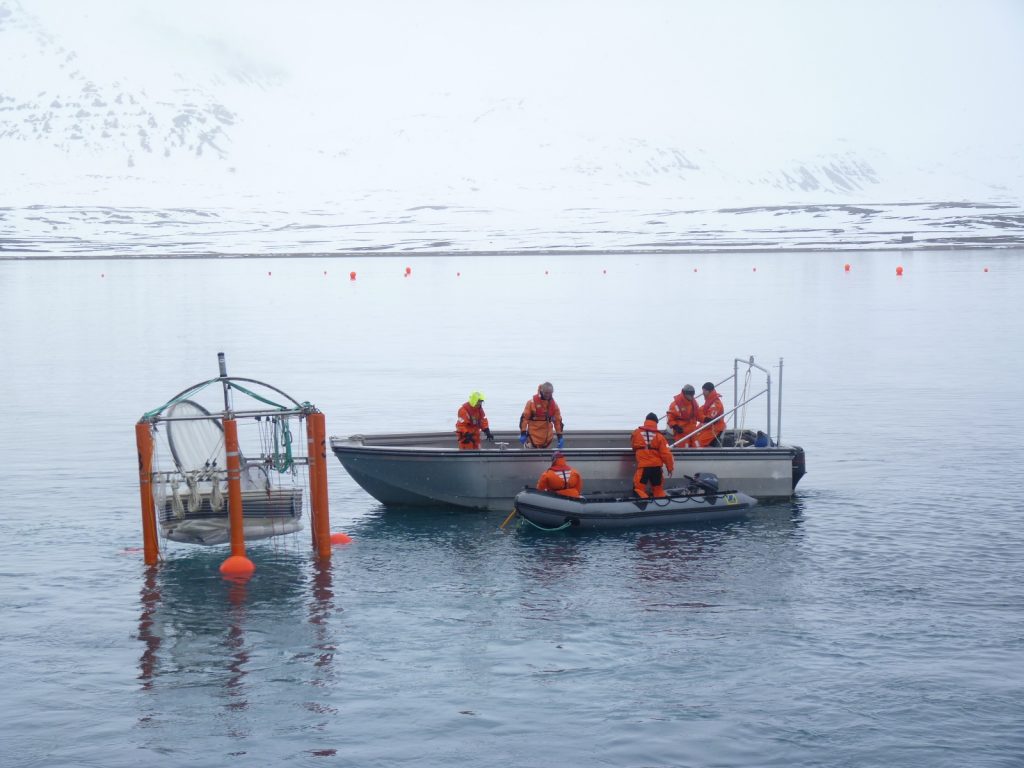
Scientists measure ocean acidification off the coast of Svalbard. (I.Quaile)
A new study reported in Nature Climate Change this week says ocean acidification is spreading rapidly in the western Arctic Ocean in both area and depth. That means a much wider, deeper area than before is becoming so acidic that many marine organisms of key importance to the food chain will no longer be able to survive there.
The study by an international team including scientists from the USA, China and Sweden, is based on data collected between the 1990s and 2010. Presumably, things have got worse rather than better since then. Unfortunately, it takes a long time for scientific research to be evaluated, reviewed and published, so current developments can easily overtake assessments which are already alarming enough in themselves. So yes, I would say this should make us sit up and listen, and lend even more urgency to the need for reducing emissions and combating climate change.
Acid bath for shellfish
Ocean acidification is a process that happens when carbon dioxide out of the air dissolves in the sea, lowering the pH of the water. This reduces the concentration of aragonite in the water, a form of calcium carbonate which shellfish and other marine organisms use to build their shells or skeletons. If the water becomes too acidic, this cannot be formed to the same extent, leaving the animals without their protective shells.
The latest published research shows that acidification is not only affecting much wider areas of the Arctic Ocean, but also that it is happening down to a much greater depth than before.
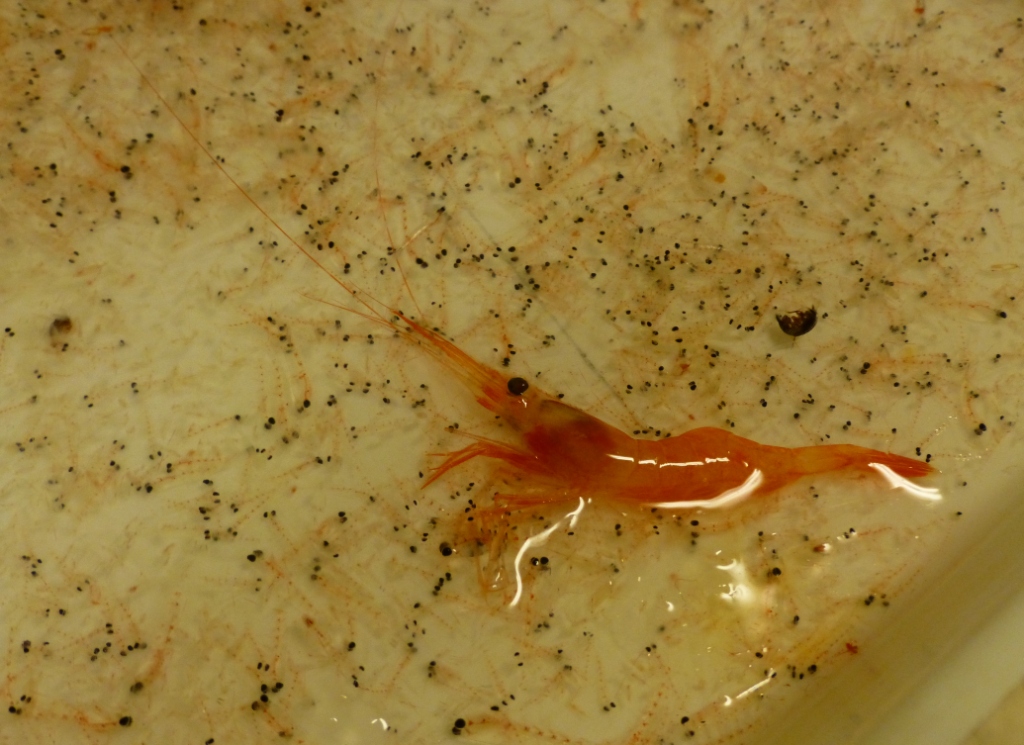
Arctic residents like shrimps like cooler water – and need calcium to form their shells. (Pic: I.Quaile, Svalbard, on board Helmer Hanssen research vessel)
Between the 1990s and 2010, acidified waters expanded northward around 300 nautical miles from the Chukchi slope off the coast of northwestern Alaska, to just below the North Pole, the scientists write. At the same time the depth of acidified waters has increased from approximately 325 feet to over 800 feet, or from 100 to 250 metres.
“The Arctic Ocean is the first ocean where we see such a rapid and large-scale increase in acidification, at least twice as fast as that observed in the Pacific or Atlantic oceans”, said Professor Wei-Jun Cai from the University of Delaware and Mary A.S. Lighthipe, Professor of Earth, Ocean and Environment at the same University. Cai is the US lead principal investigator on the project.
“The rapid spread of ocean acidification in the western Arctic has implications for marine life, particularly clams, mussels and tiny sea snails that may have difficulty building or maintaining their shells in increasingly acidified waters”, said Richard Feely, senior scientist with NOAA and a co-author.
Tiny sea snails called pteropods are part of the Arctic food web and important to the diet of salmon and herring. Their decline could affect the larger marine ecosystem.
Among the Arctic species potentially at risk from ocean acidification are subsistence fisheries of shrimp and varieties of salmon and crab.
The polar regions are suffering more than others, because cold water absorbs CO2 faster.
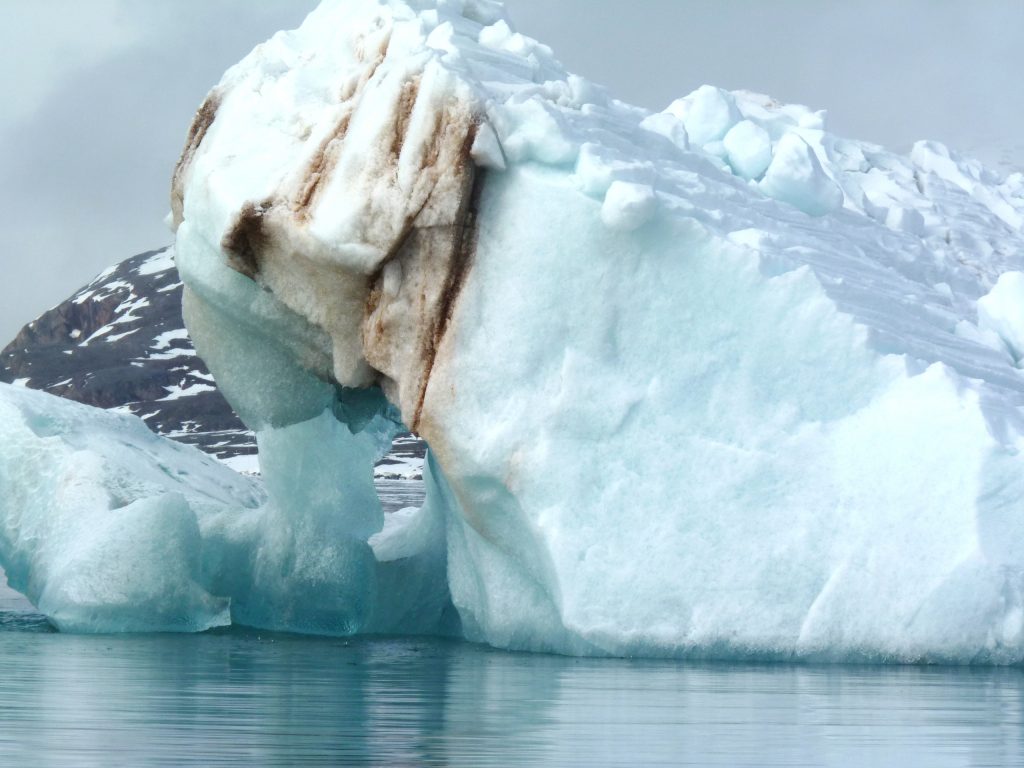
The icy waters of the Arctic are particularly susceptible to acidification (I.Quaile)
Less ice to hold back warm water
The acidification study published this week used water samples taken during cruises by the Chinese ice breaker XueLong (snow dragon) in the summer 2008 and 2010 from the upper ocean of the Arctic’s marginal seas, right up to the North Pole, as well as data from three other cruises going back to 1994. The data, along with model simulations, suggest that increased Pacific Winter Water, driven by circulation patterns and retreating sea ice in the summer season, is primarily responsible for the expansion of ocean acidification, according to Di Qi, the lead author of the paper.
This water from the Pacific comes through the Bering Strait and shelf of the Chukchi Sea into the Arctic basin. Melting sea ice is one factor which allows more of the Pacific water to flow into the Arctic Ocean. The Pacific Ocean water is already high in carbon dioxide and has higher acidity. As it moves north, its acidity increases further for various reasons.
The melting and retreating of Arctic sea ice in the summer months also lets Pacific water move further north than in the past.
The scientists have observed that Arctic ocean ice melt in summer used to occur only in shallow waters with depths of less than 650 feet or 200 meters. But now, it spreads further into the Arctic Ocean.
“It’s like a melting pond floating on the Arctic Ocean. It’s a thin water mass that exchanges carbon dioxide rapidly with the atmosphere above, causing carbon dioxide and acidity to increase in the meltwater on top of the seawater”, said Cai. “When the ice forms in winter, acidified waters below the ice become dense and sink down into the water column, spreading into deeper waters.”
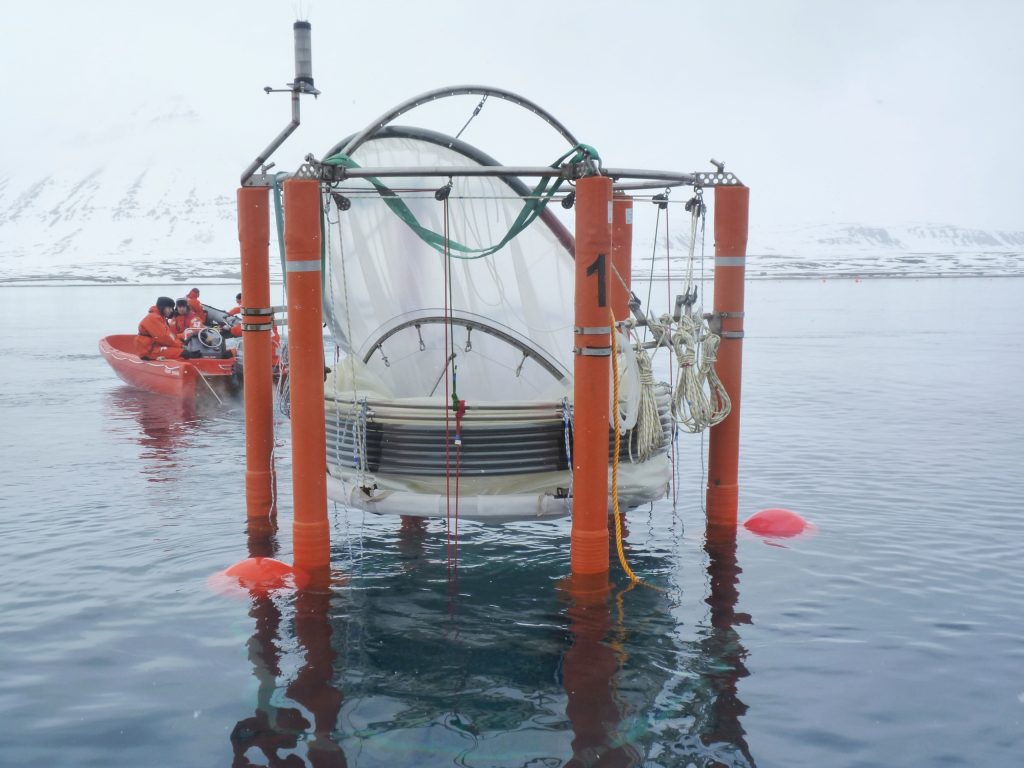
These mesocosms are used to research the effects of acidification on ocean-dwellers. (I.Quaile)
Climate chaos – not just for polar bears
In 2010, I spent some time with scientists conducting the world’s first experiments in nature, off the coast of Svalbard, to establish exactly how increasing acidification affects the flora and fauna in the Arctic Ocean.
Mesocosms, or giant test-tubes, were lowered into the sea to capture a water column with living organisms inside it. Different amounts of CO2 were added to simulate the effects of different emissions scenarios in the coming decades.
Similar experiments are still being conducted in different ocean areas. Results so far have been scary to say the least.
Mussels, snails, sea urchins, starfish, coral, fish, “some of these species will simply not be able to compete with others in the ocean of the future”, Ulf Riebesell from the Helmholtz Institute for Ocean Research in Kiel, GEOMAR, told me in an interview back in 2013, when he was a lead author of a report by the International Programme on the State of the Oceans (IPSO). He was also one of the scientists in charge of that first Arctic acidification in situ experiment I witnessed back in 2010. He is currently coordinator of the German national project Biological Impacts of Ocean ACIDification (BIOACID).
Riebesell says the sea water in the Arctic could become corrosive within a few decades. “The shells and skeletons of some sea creatures would simply dissolve”, he told me.
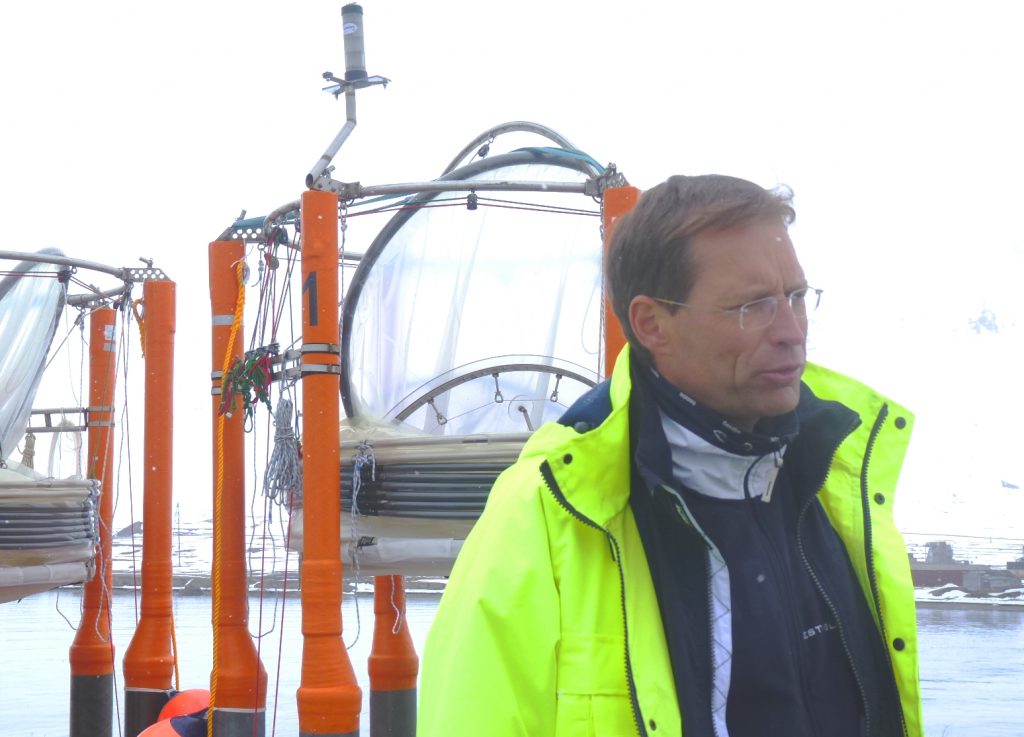
Ulf Riebesell supervising the deployment of mesocosms off Svalbard. (Pic. I.Quaile)
Those feedback loops
February 27th was Polar Bear Day. Attention focused on how the decline of sea ice is having devastating impacts on those iconic creatures, who have become a key symbol of the effect of our human-induced climate change on the Arctic. Sea snails may not be quite as charismatic, but the related threat to all these tiny organisms in the water is no less worthy of our attention. Journalist Chelsea Harvey of The Washington Post writes:
“The Arctic is suffering so many consequences related to climate change, it’s hard to know where to begin anymore (…) The study highlights the interconnected nature of climate consequences in the Arctic – the way that greenhouse gas emissions, rising temperatures, ice melt and ocean acidification are all linked and help to reinforce one another. And it points to yet another example of a climate effect that’s not just a concern for the future, but is already an issue – and a growing one – today.”
Indeed, Chelsea. Climate change is already changing our lives and our planet. And, of course, what happens in the Arctic doesn’t stay in the Arctic. The scientists studying ocean acidification and its impacts are also concerned about a feedback effect that will further exacerbate global warming.
When the IPSO report on the state of the oceans was published, I interviewed the organisation’s scientific director Alex Rogers, a professor of conservation biology at the University of Oxford. He told me the oceans were already taking up about a third of the carbon dioxide we are producing. The report said sea water was already 26 percent more acidic than it was before the onset of the Industrial Revolution – and it could be 170 percent more acidic by 2100. In the long run, the ocean will become the biggest sink for human-produced CO2, but it will absorb it at a slower rate.
“Its buffer capacity will decrease, the more acidic the ocean becomes”, Kiel-based scientist Ulf Riebesell told me.
The IPSO report also drew a very unsettling comparison between conditions today and climate change events in the past that have resulted in mass extinctions:
“On a lot of these major extinction events we see the fingerprints of high temperatures and acidification, similar effects to the ones that we are experiencing today”.
Now there is a frightening possibility.
It is not too late to do something about this, although the experts stress the CO2 will remain in the oceans for thousands of years. The scientists tell us the key step would be to reduce greenhouse gas emissions, but also to reduce pollution and other pressures on the ocean ecosystem, which reduce its resilience. High time for the Clean Seas initiative, to reduce ocean pollution from marine litter, especially from plastic, launched this week by the United Nations Environment Programme.
Arctic CO2 hits alarming levels
Worrying news from scientists in the USA monitoring the global CO2 concentration. NOAA (The US National Oceanic and Atmospheric Administration) says for the first time ever, more than 400ppm (parts per million) have been measured in the atmosphere in the Arctic. This is a very worrying development. Jim Butler, who’s in charge of global monitoring at NOAA, says this should be a reminder to everybody that we are in deep trouble. CO2 concentration has been rising increasingly fast. 350 ppm is the figure many scientists say is the highest the earth can go without being in danger from drastic climate change.
So far, it’s only the Arctic – which is heating up around twice as fast as the rest of the planet – where the 400pm mark has been reached. The average is around 395ppm for the rest of the world. But the NOAA researchers – not known for exaggeration I’d say – say the 400 mark will be reached in just a few years.
Bearing in mind the lack of progress in international negotiations, with a report recently published indicating we’re heading for a 3.5 degree C rise in global temperature, way above the 2° target set by the international community, it’s hard to see how we are going to turn this around. And, as Professor Mojib Latif, one of the IPCC lead authors and a renowned meteorologist and climate expert, reminded me just last week, even those 2° would be a major challenge and unprecendented for the earth.
Gulf stream heating up
Scientists have observed that the Gulf Steam has been heating up two to three times as fast as the rest of the Atlantic over the last 100 years. Professor Martin Visbeck from the Helmholtz Centre for Ocean Research in Kiel, Germany, says the Gulf Stream, which accounts for the relatively mild climate of north-western Europe, has become around 1.2°C warmer since 1900 compared with a 0.4 degree rise in the Atlantic as a whole. The trend is similar with other important streams off the coasts of Japan, Australia, Brazil and southern Africa.
The scientists say the enhanced warming could reduce the ability of the oceans to absorb carbon dioxide as warmer water absorbs less than cold water. They stress the need for more data and continuous measurement, but Visbeck says the results indicate that climate change is changing global ocean circulation. More in the journal Nature Climate Change.
Mission accomplished – data worrying. The Arctic ocean acidification project
I have just heard that the experiment I reported on from Svalbard has been concluded. A press release from Greenpeace quotes Professor Ulf Riebesell from the IFM-GEOMAR Kiel Uni ocean acidification project as saying the experiment was a success.

(I took this pic of Prof. Riebesell watching the deployment of the mesocosms last month, see earlier posts).
That doesn’t mean the news is good:
“Not only do we now have the most comprehensive data set ever on the impacts of ocean acidification in Arctic waters, we have also learned from this experiment that ocean acidification in these waters has a definite impact on the base of the food web, which can have implications for the entire ecosystem.” says Prof. Ulf.
“If we keep emitting CO2 at the current rate, marine organisms will experience changes in ocean acidity beyond anything they have experienced in the last 20 million years of their evolutionary history.”
Worrying times indeed.




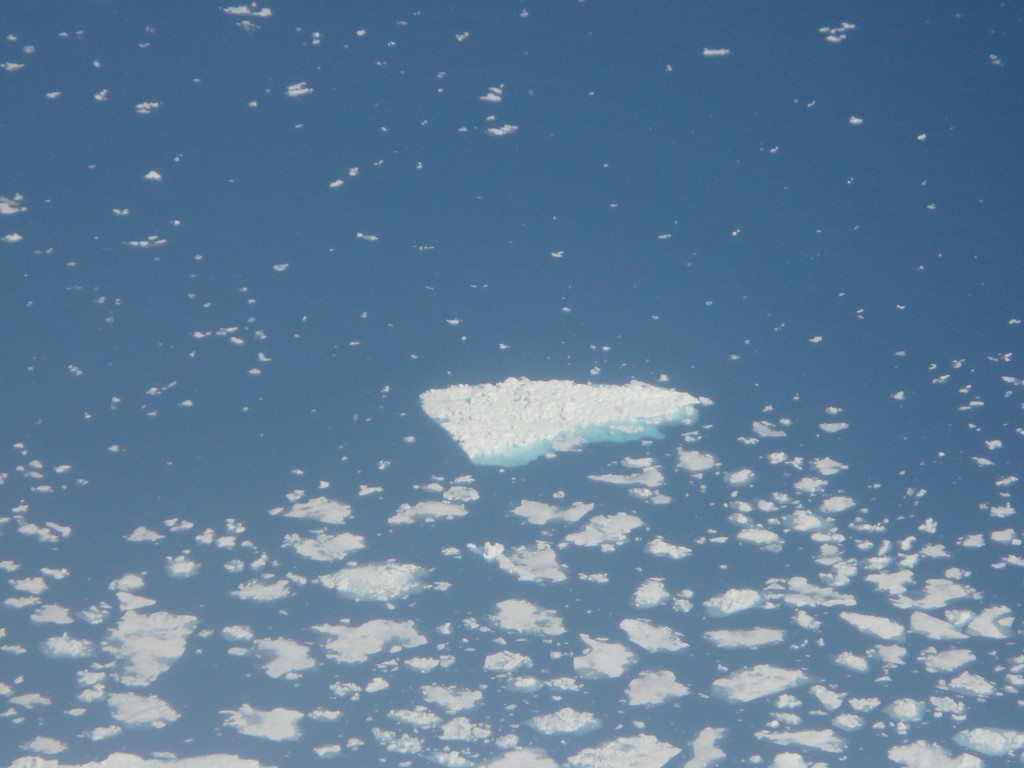
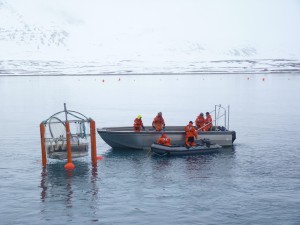
















Feedback